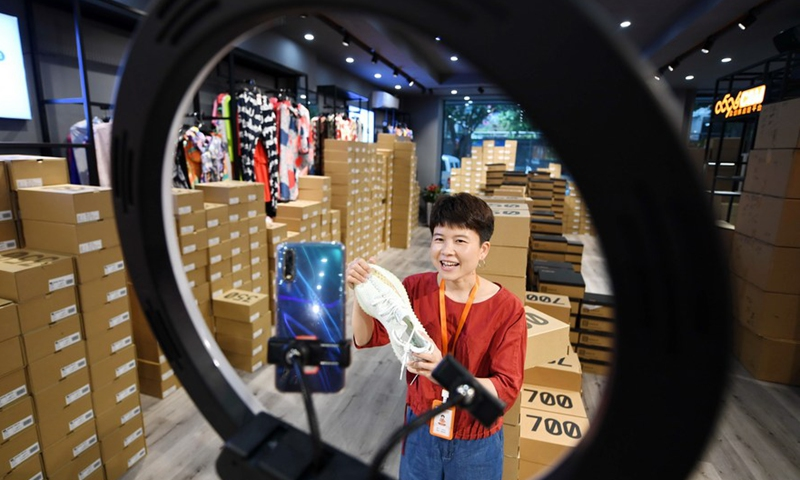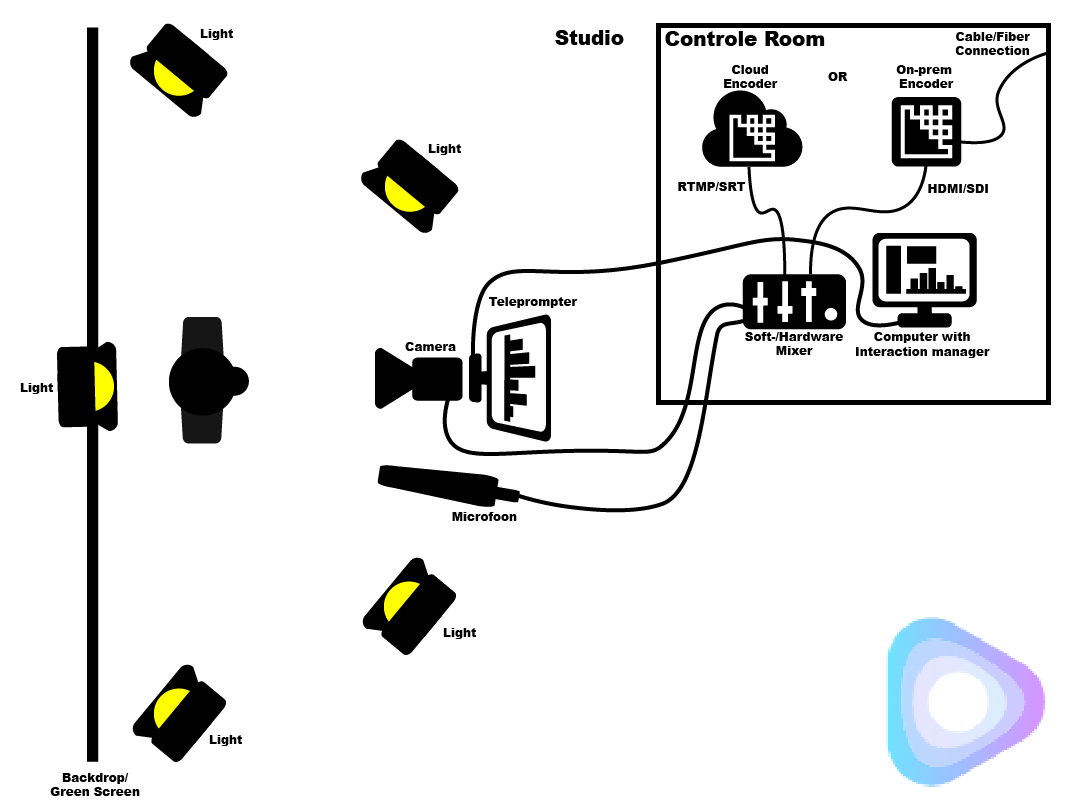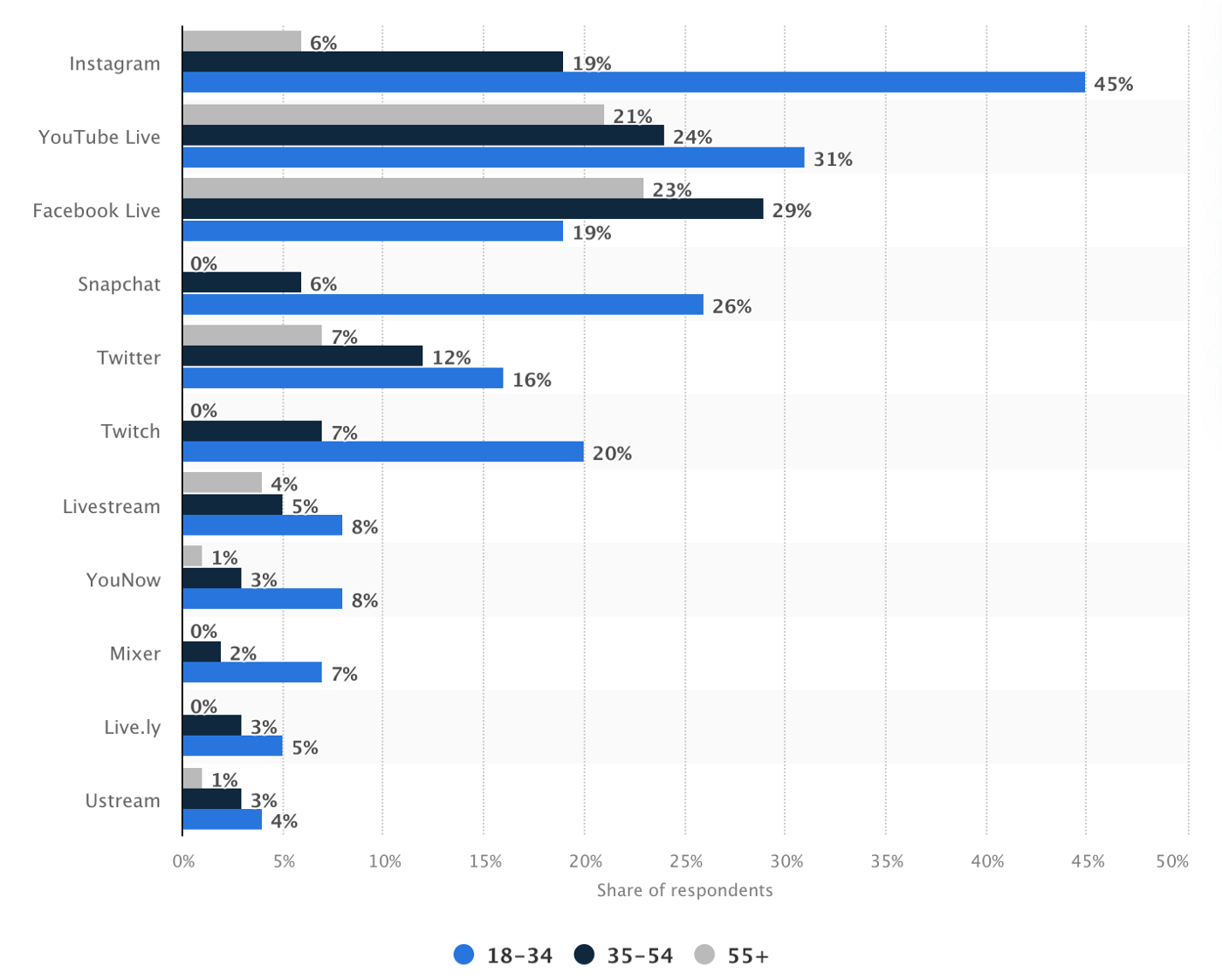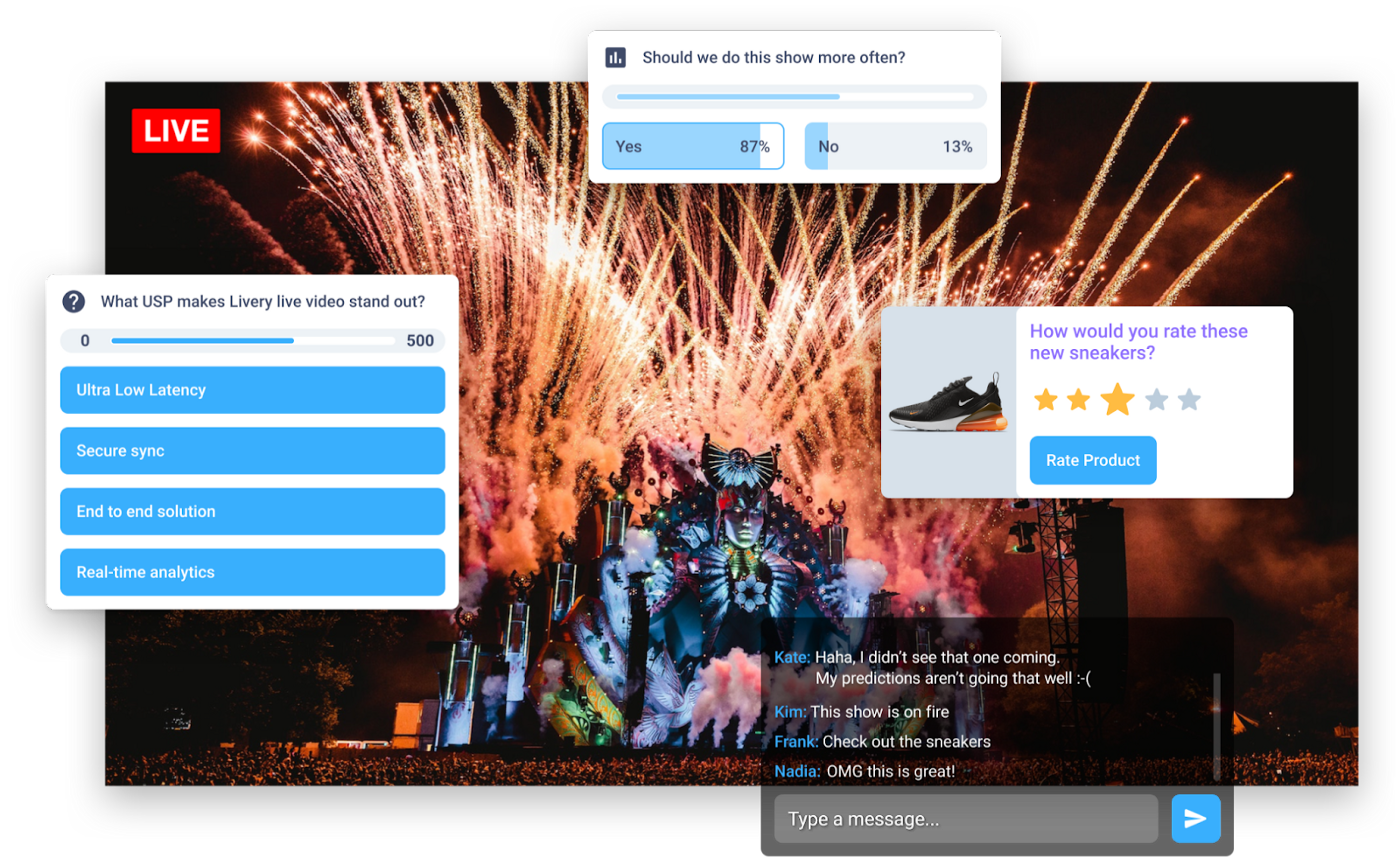The trending topic on everyone’s mind in 2022: Interactive Livestreaming. In 2020, people heavily focused on the transition from offline to online events due to the COVID-19 pandemic. Now that organizations have largely solved the most pressing challenges related to livestreaming, they have turned their attention toward finding solutions to maximize the potential of virtual live events — namely, by adding interactivity. In this article, we’ll explore it all: what interactive livestreaming is, where it’s already taking off, how to set up your own interactive livestream, and the opportunities virtual interactive live experiences present for businesses and influencers alike.
How to Set up Your Livestreaming Studio
Recent advancements in technology have reduced the startup costs for a basic livestream studio, lowering the barrier to entry for new streamers. In the past, the cost for a proper studio setup started at $50k and could easily run into the millions. Now, all you need is a smartphone to get started.
A woman sells clothes through the live webcast platform of Taobao at Zhili Town of Huzhou, east China’s Zhejiang Province (Xinhua/Xu Yu).
While your smartphone can handle a simple stream, a few strategic investments can bring your stream from basic to professional. Our recommendations are to start with a high-quality camera, microphone, and proper lighting. But if you’re ready to take it to the next level, consider a setup that includes:
- A soundproof room
- A green screen for chroma key or a branded backdrop
- An HD Camera with SDI/HDMI output
- One or more external directional microphones
- A tripod
- A laptop/PC with mixing and interaction software
- Three-point lighting: lights on the presenter, lights behind the presenter & lights to illuminate the green screen
Depending on the situation, you may also want to use a teleprompter to display the presenter text, communicate viewer data directly with the host, and display real-time results in-studio, (i.e., complete a full feedback loop).
Additional Stream Setup Considerations
Now that you have your hardware squared away, here are a few additional considerations for your stream.
Upload Speed
A key component for successful video streaming is the internet connection upload speed—it needs to be efficient enough to deliver a high-quality multi-bitrate stream. At Livery, our customers are located all over the world. In 95% of our customer’s cases, a copper or fiber-optic connection is efficient enough to deliver high-quality video regardless of location. We recommend that you use an internet connection with an upload speed that is at least twice as fast as the total bitrate that is going to be streamed. For example, if you have a multi-bitrate stream with two different video qualities (5Mbps and 1Mbps) and 96 Kbit audio quality, your stream totals 6.096, or 6.1Mbps. This configuration would therefore need an internet connection with an upload speed of at least 12.2Mbps to run smoothly. The extra buffer is necessary to properly handle any fluctuations with the internet connection.
Streaming Platform
The next piece you will want to consider is the video delivery solution, or streaming platform. Platforms like Twitch, Facebook Live, and YouTube Live are easy-to-use tools that bring livestreaming capabilities to the masses. A simple SRT/RTMP ingest URL allows you to send live video to one of these cloud platforms. Over 7 million unique streamers go live on Twitch every month, and Twitch wasn’t even the largest livestreaming platform in 2020.
Twitch was the 5th most popular platform for watching livestream video in the US in 2020 (Ceci). When moving from simple livestreaming to interactive livestreaming, the major social streaming platforms start to crack. This is for two main reasons: technical limitations and “terms of service” limitations.
Traditional Streaming vs. Interactive Streaming Platforms
Most traditional streaming providers do not support any interactive capabilities.These platforms were built with minimal and structured interaction in mind–their built-in lag time makes real-time interaction nearly impossible. If you want to get a bit technical, these scalable platforms use an HLS and/or DASH stream with small 2-second segments that deliver video with a glass-to-glass latency of 8–16 seconds. The latency required for a full feedback loop cannot be more than 5 seconds. WebRTC-based platforms, on the other hand, solve one problem but face another. They are able to deliver live video with sub-second latency, but they lack quality and the ability to scale. The third option, scalable WebRTC solutions, are very costly and require an in-depth knowledge of video technology to set up, making them inaccessible to most streamers. This Medium post contains more information about this topic if it interests you. Terms of Use Finally, free (or mostly free) streaming platforms often have some nasty statements in their Terms of Use. We recommend reading them carefully before you sign up in order to make sure that you:
- Retain ownership of your content (preventing the platform from making money off of your content).
- Hold ownership over your fanbase (barring the platform from removing your access to your audience).
- Are not charged any additional fees if you draw a large audience and use more bandwidth than most users.
- Can monetize your content.
The following terms have been pulled from the T&C documentation of the major free streaming platforms:
- You are not allowed to sell any advertising, sponsorships, or promotions placed on, around, or within the service or content.
- You grant the service the right to monetize your content on the service.
- The service provider may suspend or terminate your access, your account(s), to all or part of the service.
- You hereby grant to us a non-exclusive, royalty-free, transferable, sub-licensable, worldwide license to host, use, distribute, modify, run, copy, publicly perform or display, translate and create derivative works of your content.
- If your aggregate bandwidth usage (across all accounts you control) is higher than 99% of self-serve users on our platform in any calendar month, we may, in our discretion, charge fees for excessive usage, require you to upgrade to a more suitable plan, or terminate your account(s) upon advance written notice.
You can find all kinds of stories on the internet from streamers who lost all of their earnings due to bans or restrictions enforced by big streaming services. And it’s not just independent influencers—major companies have been affected as well. Here are a few examples of these term limitations our clients had experienced firsthand before switching to Livery:
- In early 2021, a number of companies using Vimeo moved over to Livery upon receiving large bills for violating Vimeo’s Fair-Use Policy.
- Major game publishers are not able to work with their own sponsors during eSports tournaments due to the restrictions in the streaming platform’s terms.
- E-commerce activities are often a gray zone—are they considered to be advertisements or sponsorships?
Closing Thoughts: The Potential of Interactive Livestreaming
Early adopters of interactive livestreaming technology know that it is an emerging method for brands to advertise products, increase user engagement, and connect with new target audiences. However, a combination of technological limitations and arguably predatory terms and conditions limit streamers’ creative freedom, monetization opportunities, and overall success. To address the limitations that are inherent to existing streaming solutions, innovators in the field of interactive live video are collaborating with video specialists and development teams to tweak existing solutions or build tailor-made solutions from scratch. In this post, we take a look at the technical challenges we faced when building an interactive livestreaming platform. While livestreaming hardware has become commonplace, the distribution of interactive livestreams has proven itself to be a bottleneck for global adoption. Ex Machina, a company based in Amsterdam and an early adopter in the space, decided to create an interactive livestreaming platform to power their own products. Their second-screen experiences were already reaching millions of users around the globe, and they saw an opportunity to merge the first and second screens into a single-screen experience.In 2021, Ex Machina made their interactive livestreaming services accessible to the outside world under a new name: Livery Video. Livery is the first end-to-end interactive livestreaming solution powered by the Akamai content distribution network. It is a turnkey solution that comes with its own ULL-CMAF video streaming capabilities, as well as a white label interactive engine that offers a wide variety of interaction types. This budding technology is set to empower companies to tap into a potentially billion-dollar market.
A number of examples from the Livery interactions available in the engine. Taobao reinvented at-home shopping with their proprietary interactive livestreaming platform and saw triple-digit growth in its number of daily active users in 2020. By simplifying interactive livestreaming, Taobao has been able to scale horizontally, increasing the number of merchants using the Taobao Live platform by 220% in 2020. Lockdowns led to a small uptick in livestreaming e-commerce activities in Europe, but it was nothing compared to China, where lockdowns skyrocketed the use of interactive livestreaming for brands and consumers. Experts expect sales to reach $423 billion by 2022 in China alone. The majority of European brands that understand the opportunity at hand do not have the means to launch a program in-house. The current labor shortage is further limiting their ability to seize the opportunity. Ultimately, they need a turnkey solution that will allow them to focus on what they do best, while relying on a trustworthy platform like Livery to fulfill their interactive livestreaming needs. Interested in learning more about the Livery Video? Get in touch! Livery provides everything you need to launch your very own interactive livestream, including concept creation, business modelling, front-end design, back-end development, and project management.








